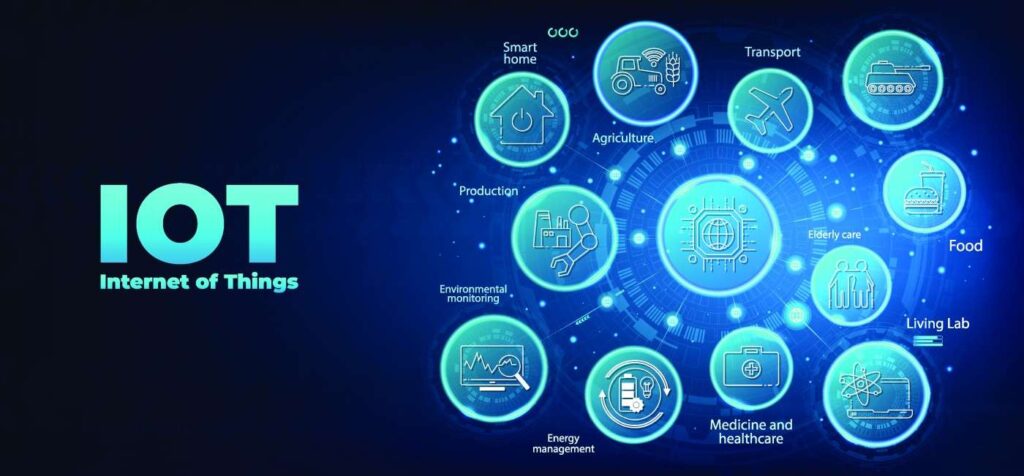Data is undoubtedly a critical organizational asset that forms the basis of intelligent strategies and competitive advantage. To fully utilize the potential of the data, businesses must implement various cutting-edge technologies that seamlessly integrate and improve the data lifecycle. Robust data collection solutions, such as Internet of Things (IoT) devices and advanced sensors, are necessary to gather significant data from various sources and guarantee a consistent supply of this critical organizational asset.
Then, advanced storage options, such as cloud-based data warehouses, store and arrange enormous amounts of data while ensuring its security and accessibility as a crucial organizational asset. To maximize the value of this critical corporate asset, advanced data processing methods, such as machine learning and artificial intelligence, play a key role in evaluating and drawing insights from the data. Furthermore, robust data.
Undoubtedly, one of the most critical organizational resources for efficient data management is data storage. It includes the numerous media and tools used to capture and preserve digital data, assuring its accessibility for present and future operations. Network-based storage and direct area storage (DAS) are the two main categories of data storage. DAS uses optical discs, solid-state drives, or hard disk drives to create direct connections to computing equipment.
Network-attached storage (NAS), storage area networks (SAN), and cloud storage are all types of network-based storage that may be accessed online. These technologies provide easy access to data anytime and let users store it in several structured, unstructured, or semi-structured forms. Data storage technologies also offer backup and recovery options, protecting critical organizational assets from loss or corruption.
The primary technologies that cooperate to fully utilize data are highlighted here as to how they will influence enterprises in the future.
Cloud Computing: Empowering Data
Cloud computing has emerged as a pivotal force in empowering data as a critical organizational asset. In today’s digital landscape, data has become the lifeblood of businesses, driving decision-making, innovation, and competitive advantage. Cloud computing provides the infrastructure and tools necessary to harness the full potential of this data, enabling organizations to securely store, process, and analyze vast amounts of information with unprecedented efficiency and scalability.
Through cloud-based services, companies can access cutting-edge technologies like artificial intelligence, machine learning, and big data analytics, transforming raw data into actionable insights. Moreover, cloud solutions facilitate seamless collaboration and remote access, fostering agility and adaptability in an increasingly global and distributed workforce. In essence, cloud computing not only empowers organizations to unlock the true value of their data but also ensures its resilience, accessibility, and strategic relevance in an ever-evolving digital world.

Accessibility And Scalability
Cloud computing has changed how data is managed and used within firms, making it one of the most significant and critical organizational assets. The vast potential of cloud computing makes it a vital tool for businesses in the digital era. One of the main benefits is its capacity to offer unmatched accessibility of data and scalability, turning data into a true pillar of contemporary businesses.
Businesses may now securely store and access enormous volumes of data by implementing cloud-based storage solutions, overcoming the constraints set forth by physical infrastructure. This lowers operational expenses and guarantees that essential resources are allocated to critical organizational assets. Businesses must inevitably enhance their storage and processing capacities as they amass ever-growing datasets.
This problem is easily solved by cloud computing, which enables on-demand and seamless scaling, enabling organizations’ assets to seamlessly accommodate their data growth. This increased agility of critical organizational assets facilitates the development of data-centric applications and services.
Cloud-based solutions enable businesses to fully utilize their data, further establishing it as one of their most critical organizational assets. It speeds up business insights, improves consumer experiences, and allows data-driven decision-making.
Cloud computing is the key technology that helps this recognition by critical organizational assets of the strategic importance of data for digital transformation and sustainable growth as they continue to recognize the strategic value of data. Utilizing the cloud’s scalability and simplicity of access to data, businesses can confidently advance toward a future where data will continue to be the key to their success.
Big Data Analytics: Uncovering Insights From Vast Data Sets
In today’s data-driven environment, big data analytics is recognized as one of the most critical organizational resources due to data’s swift and exponential growth. It takes sophisticated analytics systems that can handle the volume, velocity, and variety of data to fully use the potential of the enormous amount of data being produced every second from many sources.
Using statistical algorithms, machine learning, and data visualization tools, big data analytics enables firms to uncover patterns, trends, and correlations that would otherwise be concealed in vast data sets. These priceless insights guide well-informed decision-making, aiding critical organizational assets in streamlining their operations and improving consumer experiences.
Big data analytics also goes beyond the limitations of organized data. It broadens its analysis to raw data, such as text data, social media posts, and customer reviews, providing a thorough understanding of client preferences and attitudes.
Businesses can use this data to improve their marketing tactics, customize their product offers, and quickly address client wants, further solidifying their market placement. Big data analytics have changed the game for converting raw data into usable knowledge, giving firms that properly employ this priceless resource a competitive edge.
Artificial Intelligence And Machine Learning
Artificial intelligence (AI) and machine learning (ML) algorithms, with advanced data to the level of critical organizational assets, are the building blocks of today’s data-driven businesses. Businesses can quickly and efficiently monitor vast amounts of data using AI and ML, uncovering interesting patterns and tendencies that aid decision-making. These clever systems are excellent at automating procedures like data classification, anomaly detection, and predictive modeling, streamlining processes, and increasing overall effectiveness.
Data’s global predictive and prescriptive potential increases exponentially as Artificial intelligence and Machine learning develop; it offers businesses a competitive edge in the market. By adopting these technologies, companies may remain ahead of the curve, quickly adjust to shifting conditions, and spot new opportunities for critical organizational assets. Leveraging AI and ML in the fast-paced digital environment of today.

Data Security And Privacy Measures
Data security and privacy measures stand as paramount safeguards for any organization, recognizing data as a critical organizational asset. In an era characterized by increasing cyber threats and stringent regulatory requirements, the protection of sensitive information has never been more crucial. Robust data security measures encompass encryption, multi-factor authentication, and robust access controls, fortifying the digital fortress around invaluable data repositories.
Meanwhile, stringent data privacy practices, often aligned with regulations like GDPR or CCPA, not only ensure compliance but also cultivate trust among customers and stakeholders. By investing in cutting-edge technologies and cultivating a culture of cybersecurity awareness, organizations can not only shield their data from malicious actors but also demonstrate their commitment to respecting individual privacy rights. In doing so, they not only preserve the integrity of their critical organizational asset but also safeguard their reputation and longevity in an increasingly data-driven world.
Safeguarding Valuable Assets
Data security and privacy have become essential organizational assets in today’s digital environment. Data protection is more vital than ever because it is so crucial to organizations of every sort and in all industries. These days, several technologies, like encryption, access restrictions, and identity management solutions, are used to secure sensitive data from unlawful access and potential cyber threats.
By encoding sensitive information in an arrangement that is only accessible to those with the appropriate encryption key, businesses can stop the inappropriate use of their priceless assets. Access controls are similarly crucial in this context since they limit who has access to data and so lower the potential danger of data breaches.
Solutions for identity management have a significant impact on data security. They aid with user authentication and authorization, ensuring that only those with the proper credentials can access confidential information. Organizations may build stakeholder trust and protect their brand by implementing these robust data security procedures.
Organizations are now heavily investing in measures for cybersecurity to stay competitive with evolving threats because they recognize data as a crucial asset. Businesses must prioritize data security and privacy since data breaches can have severe financial and reputational effects. By doing this, companies safeguard their own economic best interests and increase the trust of customers, business associates, and shareholders who trusted them with sensitive data.
Internet Of Things (IoT): Generating Real-Time Data Streams
Data collection and use in enterprises have radically transformed due to adoption of Internet of Things (IoT) technology, making it a crucial resource. These interconnected devices, covering everything from worn gadgets to intelligent sensors, have released a hitherto impossible quantity of real-time data, leading to continuous information streams to help critical organizational assets. With the influx of real-time data, organizations have more opportunities to learn important lessons about consumer behavior, operational effectiveness, and product performance.
Organizations may now obtain real-time and pertinent data that enables them to reach educated choices quickly and proactively by leveraging the potential of IoT technology. Analytics is more accurate and precise because of the smooth information flow from IoT devices, allowing companies to respond quickly to shifting market trends and client preferences.
The capacity for gathering and examining data from IoT devices has emerged as an attractive advantage for enterprises across various industries in this fast-changing digital landscape. To stay ahead of the curve and firmly establish data to become one of the most critical organizational assets, companies must efficiently gather, process, and evaluate real-time data streams.

Conclusion : Critical Organizational Asset
Integrating cloud computing, big data analytics, AI/ML, IoT, and robust data security measures transforms data into one of the most critical organizational assets. These cutting-edge technologies empower businesses to efficiently store, analyze, and harness vast data, leading to informed decision-making, continuous innovation, and unparalleled operational excellence.
As data increasingly emerges as a strategic asset, organizations investing in these technologies and unlocking their full potential will undoubtedly lead the way in the data-driven economy. Embrace these transformative technologies and elevate your organization’s journey toward enduring success by leveraging critical organizational assets.



















